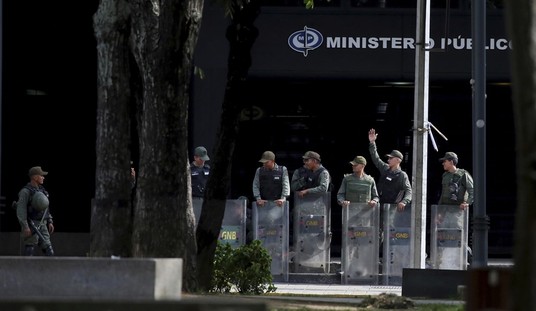Major Nidal Malik Hasan, the Fort Hood terrorist (just ask him) is the focus of Mark Steyn’s latest column, and it’s a must-read:
The U.S. Army seems disinclined to hold anything against him, especially the 13 corpses plus an unborn baby. Major Hasan fired his lawyers, presumably because they were trying to get him off — on the grounds that he’d had a Twinkie beforehand, or his beard don’t fit so you must acquit, or some such. As a self-respecting jihadist, Major Hasan quite reasonably resented being portrayed as just another all-American loon gone postal. So he sacked his defense team, only to have the court appoint a standby defense team just in case there were any arcane precedents and obscure case law he needed clarification on. I know that’s the way your big-time F. Lee Bailey types would play it, but it doesn’t seem to be Major Hasan’s style. On the very first day of the trial, he stood up and told the jury that “the evidence will clearly show that I am the shooter.” Later, in one of his few courtroom interventions, he insisted that it be put on the record that “the alleged murder weapon” was, in fact, his. The trial then came to a halt when the standby defense team objected to the judge that Major Hasan’s defense strategy (yes, I did it; gimme a blindfold, cigarette, and tell the virgins here I come) would result in his conviction and execution.
Major Hasan is a Virginia-born army psychiatrist and a recipient of the Pentagon’s Global War on Terrorism Service Medal, which seems fair enough, since he certainly served in it, albeit for the other side. Most Americans think he’s nuts. He thinks Americans are nuts. It’s a closer call than you’d think.
You know what to do next.
By the way, at one point in his column, Mark writes:
Major Hasan says he’s a soldier for the Taliban. Maybe if the Pentagon were to reclassify the entire Afghan theater as an unusually prolonged outburst of “workplace violence,” we wouldn’t have to worry about obsolescent concepts such as “victory” and “defeat.” The important thing is that the U.S. Army’s “workplace violence” is diverse. After Major Hasan’s pre-post-traumatic workplace wobbly, General George W. Casey Jr., the Army’s chief of staff, was at pains to assure us that it could have been a whole lot worse: “What happened at Fort Hood was a tragedy, but I believe it would be an even greater tragedy if our diversity becomes a casualty.” And you can’t get much more diverse than letting your military personnel pick which side of the war they want to be on.
Gen. Casey’s formulation that “What happened at Fort Hood was a tragedy, but I believe it would be an even greater tragedy if our diversity becomes a casualty,” is macabre variation on a classic Freudian slip by howlin’ Howell Raines. Raines, you’ll recall, is the arch-leftist former editor of the New York Times, on whose watch a decade ago the Jayson Blair fiasco and the Times’ obsession with story after story on the Augusta National Golf over covering that other minor story of the day — 9/11 and the opening salvo of what was once called the Global War on Terror — occurred:
Blair was brought into the organization through an internship program that, according to the Times, “was then being used in large part to help the paper diversify its newsroom.” Editor Howell Raines, a southern liberal, specifically cited Blair before the National Association of Black Journalists in 2001 as the first fruits of a hiring campaign that “has made our staff better and, more importantly, more diverse.” (No need to italicize that “more importantly.”)
Ahh, the joys of liberal privilege.
Update: Caroline Glick has more on Hasan and the PC “better dead than rude” environment that looked the other way at his actions until it was too late: “When failure carries no cost.”










Join the conversation as a VIP Member